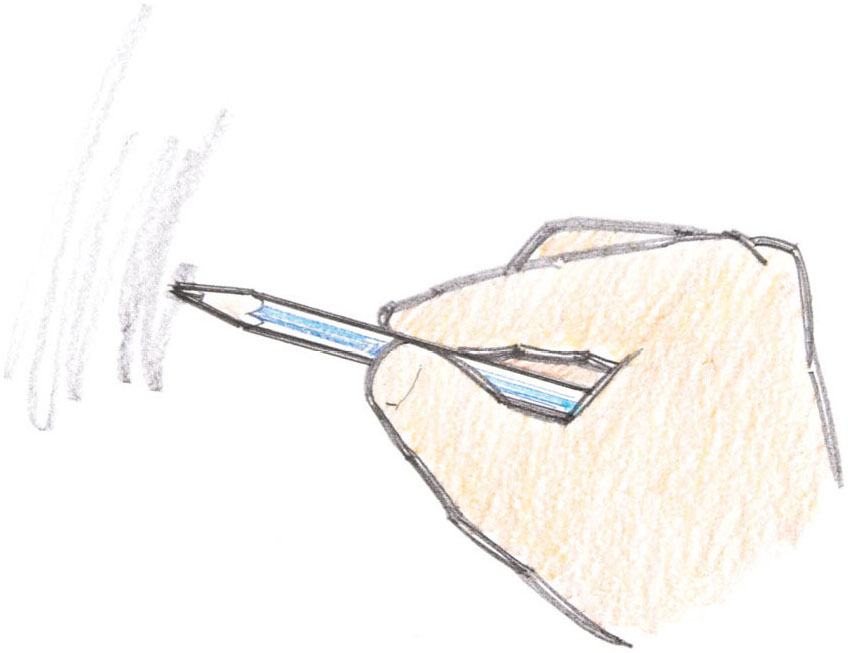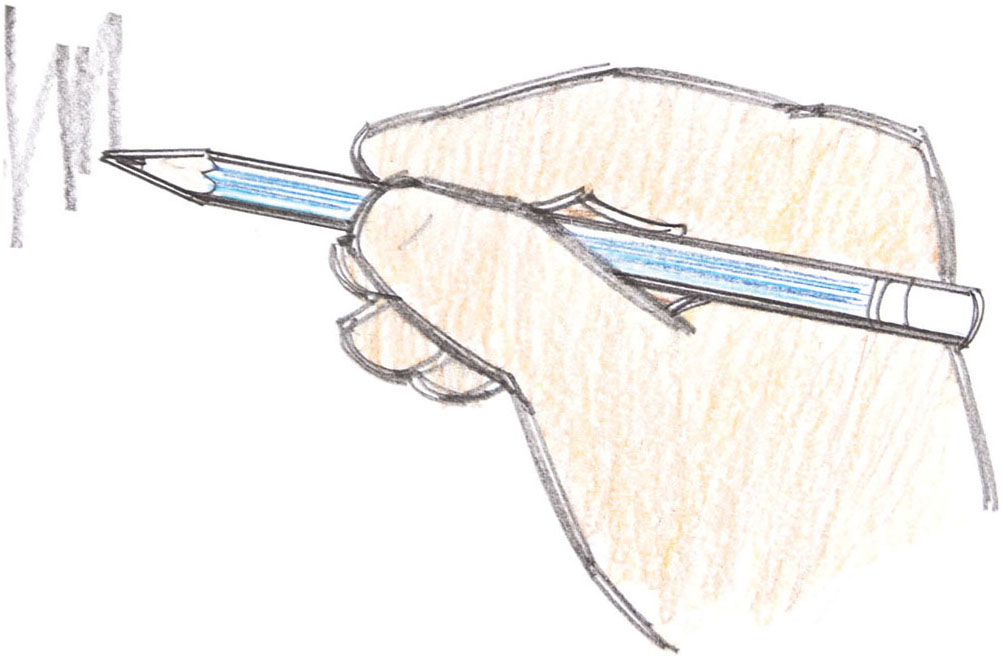
This chapter will explore sketching and drawing techniques as well as principles including perspective and values. Sketching and drawing are similar, yet different. Sketching may be quick and loose for the purpose of observing the subject, planning a drawing, and developing the skill of drawing. Drawing has a goal of making a finished work of art.
The grip of the pencil affects line quality when sketching and drawing, creating a variety of lines from tight and controlled to loose and sketchy. Furthermore, the angle of the pencil can influence line width. Held upright, a pencil makes narrow lines, while a pencil held at a low angle makes wider lines with more of the lead in contact with the paper surface. You may hold the pencil differently depending on how you are sketching and drawing. When warm-up sketching, choose the loose grip or the palm grip for loose, free-flowing lines. For precise and controlled line work, choose the handwriting grip.

Hold the pencil by the fingertips or closer to the palm. More controlled line strokes can be made by holding the pencil closer to the point. Because of the low angle of the pencil, wide lines are possible.

The end of the pencil rests in the palm for this grip. Wide lines are possible because of the low angle of the pencil against the paper surface.

Hold the pencil as if for handwriting. More controlled line strokes are possible by holding the pencil closer to the point. Because the angle of the pencil is upright, only the tip of the lead is in contact with the paper, which makes for narrow lines.